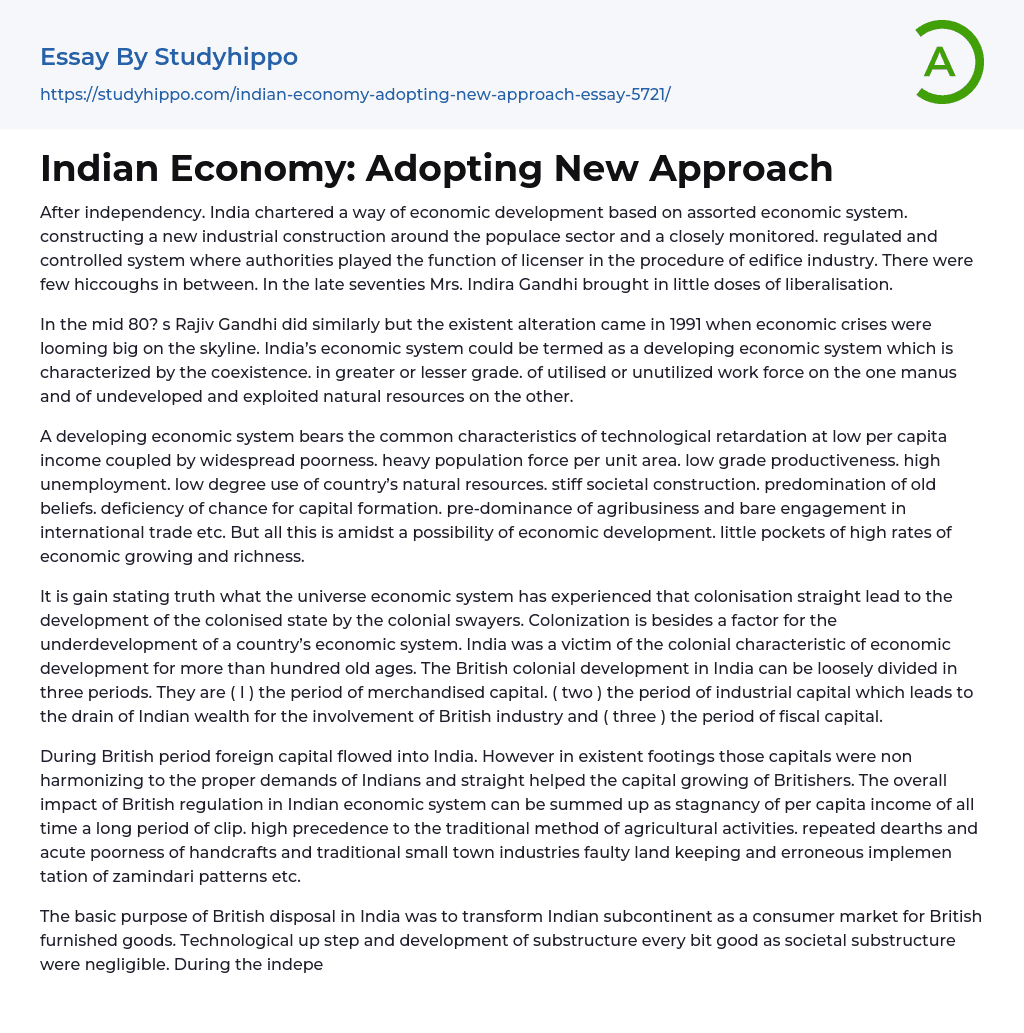India pursued economic development after gaining independence through a mixed economic system, with the government playing a significant role in overseeing the construction industry by granting licenses. However, there were challenges along the way. In the late 1970s, Mrs. Indira Gandhi introduced small-scale liberalization measures, followed by similar actions from Rajiv Gandhi in the mid-1980s. The true turning point came in 1991 when India faced an imminent economic crisis.
Consequently, India's economy can be characterized as developing and marked by both utilized and unutilized workforce as well as undeveloped and exploited natural resources to varying extents. This type of economy shares common attributes including technological stagnation, low per capita income, widespread poverty, high population pressure, low productivity, high unemployment rates, limited utilization of natural resources,a rigid social structure influenced by traditional beliefs,and restricted involvement in inter
...national trade.
Despite facing challenges, India does have pockets of high economic growth and wealth potential. However, it is undeniable that colonization leads to the development of the colonized state under colonial rule while also depleting its economy. In the case of India, it experienced over a century of colonial economic development during British rule.The text describes the different periods of development in India, including the merchandised capital era, industrial capital era, and financial capital era. It highlights how British rule resulted in foreign capital entering India but not meeting its needs and instead contributing to British capital growth. This had various negative effects on the Indian economy, such as stagnant per capita income, prioritization of traditional agricultural methods, recurring famines, extreme poverty among handicrafts and traditional village industries, flawed landholding practices, and incorrect implementation of zamindari practices. The main goal for
British administration was to transform India into a consumer market for their manufactured goods. However, there were minimal technological advancements and development in both technological and social infrastructure during this time. At independence, the Indian economy displayed typical characteristics found in developing nations. Over the past 50 years, the government has implemented policy initiatives to improve the country's economic foundation but continues to face challenges such as poverty, population growth, backwardness in agriculture and industry, limited technological advancements, high unemployment rates,and wide income disparity. Despite these challenges though, India has achieved certain milestones in its economic development.Policy measures in the last 50 years have brought about significant changes, increasing per capita income and achieving self-sufficiency in food grain production. The Indian economy is unique as it combines both public and private sectors, making it a mixed economy where modern industries coexist with traditional agricultural activities.
The Constitution guarantees economic rights for all citizens of India, including equal employment opportunities regardless of race, caste or gender, and the right to own property or engage in any trade or business. Specific provisions within the constitution outline various aspects related to India's federal economic structure, such as acquisition of private belongings with compensation based on established jurisprudence.
The text also highlights key aspects of India's economic and social development since gaining independence. These include the prohibition of begging, child labor, and human trafficking. It mentions the division of responsibilities between the central and state governments within a unitary system. Another important aspect is the vesting of residual power in the central government. Additionally, economic committees have been established by the central government to oversee resource distribution among states.
India's economic growth
and structural transformations have been noteworthy since independence.The net national merchandise has experienced a significant increase, with a 3.8% growth rate in national income. Per capita income has also consistently risen. In the second plan, there was a focus on capital-intensive manufacturing units which now contribute over 50% to industrial production in India. Over the past four decades, there has been substantial development and modernization in India's transportation system, including an extensive road network spanning 24.66 lakh kilometers across various lanes. Despite an energy crisis, progress has been made in railways and civil aviation sectors as well. These developments demonstrate India's commitment to economic policies outlined through annual budgets and five-year plans that form the basis of its economic policies.
The energy sector has witnessed significant growth in production along with the expansion of irrigation facilities leading to increased irrigated areas. Furthermore, major reforms have taken place in the banking and financial sector since independence. The process began with the nationalization of the Reserve Bank in 1949, followed by renaming and nationalizing of the State Bank of India (previously known as Imperial Bank of India) in 1995. The nationalization of 14 major commercial banks reduced control over finance capital by wealthy capitalists in 1969.This indicates that the Indian economy has moved away from being stuck at a low-level equilibrium state.
- American Dream essays
- Barriers To Entry essays
- Capitalism essays
- Central Bank essays
- Compensation essays
- Consumerism essays
- Economic Development essays
- Economic Growth essays
- Economic Inequality essays
- Economic System essays
- Economy essays
- Employment essays
- Export essays
- Finance essays
- Free Trade essays
- Gross Domestic Product essays
- Human Development essays
- Income Inequality essays
- Industry essays
- Inflation essays
- International Business essays
- International Trade essays
- Macroeconomics essays
- Materialism essays
- Max Weber essays
- Microeconomics essays
- Minimum Wage essays
- Monetary Policy essays
- Monopoly essays
- Pricing essays
- Profit essays
- Recession essays
- resources essays
- Taxation essays
- Trade essays
- Unemployment essays
- Warehouse essays
- World economy essays
- Bangladesh essays
- China essays
- Hong Kong essays
- India essays
- Japan essays
- Kuala Lumpur essays
- Malaysia essays
- Manila essays
- Pakistan essays
- Philippines essays
- Singapore essays
- Vietnam essays




